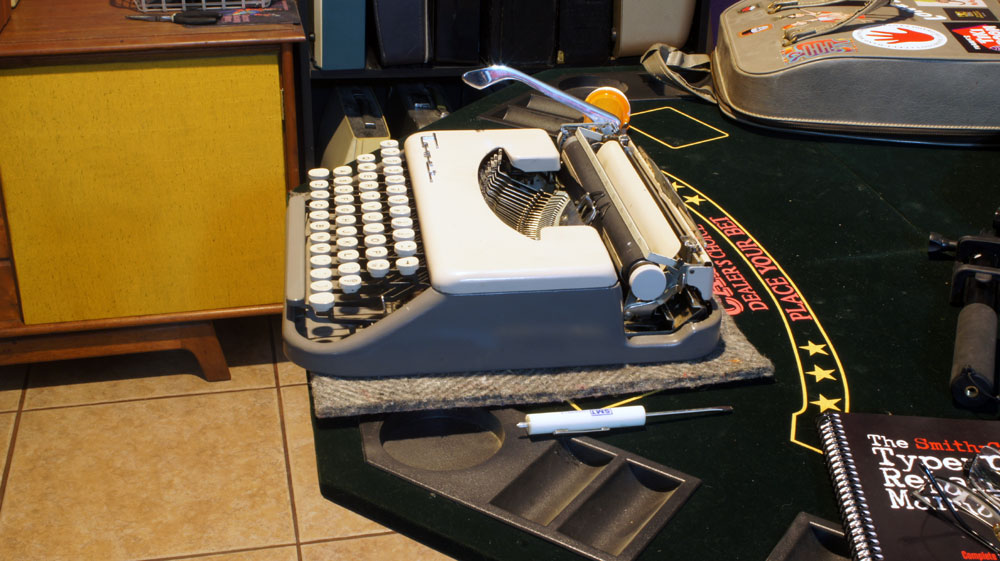
Weapon of Choice: “Indy”, 1959 Tower Chieftain III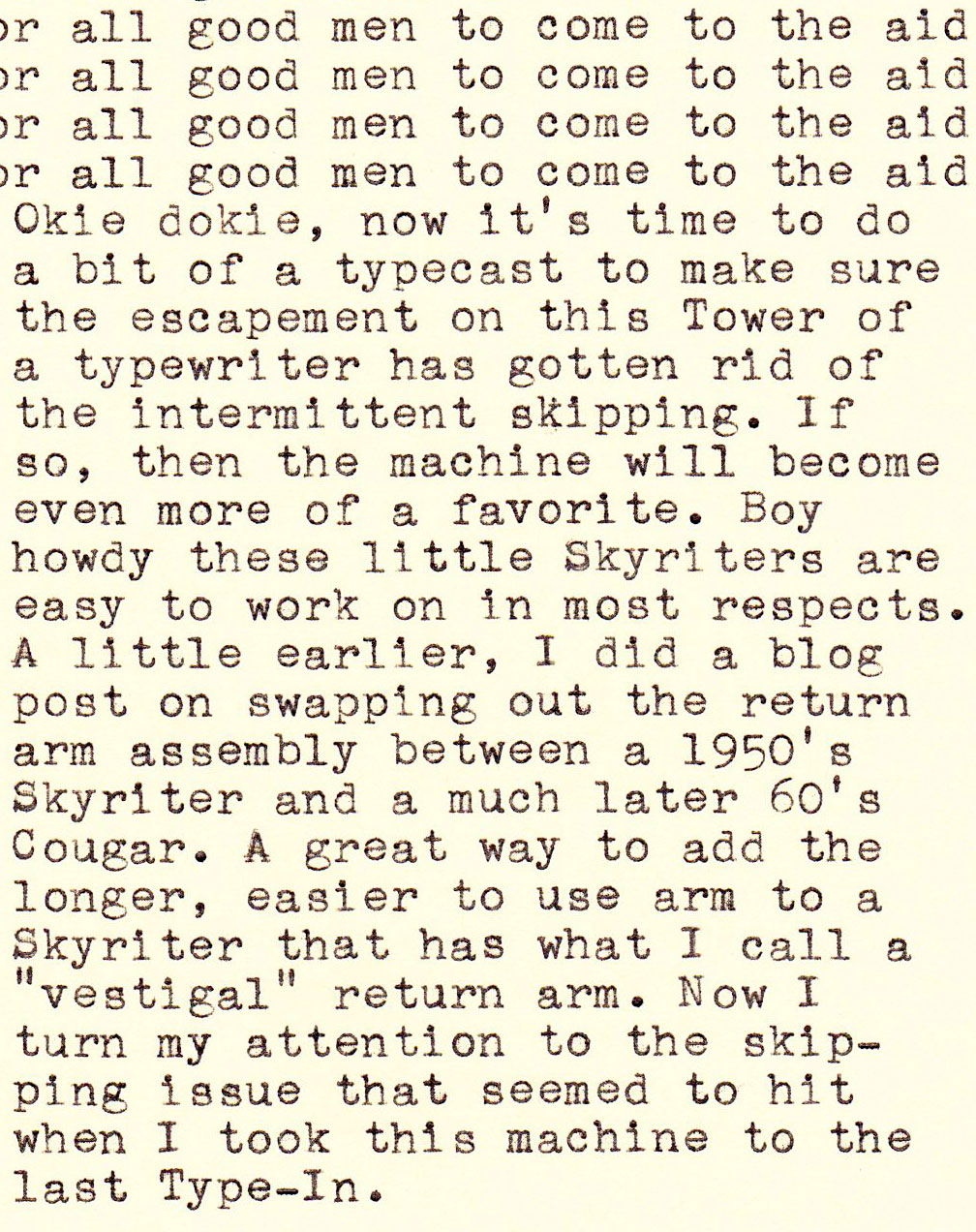
Swapping the return arm from a 6Y to a 3Y Skyriter.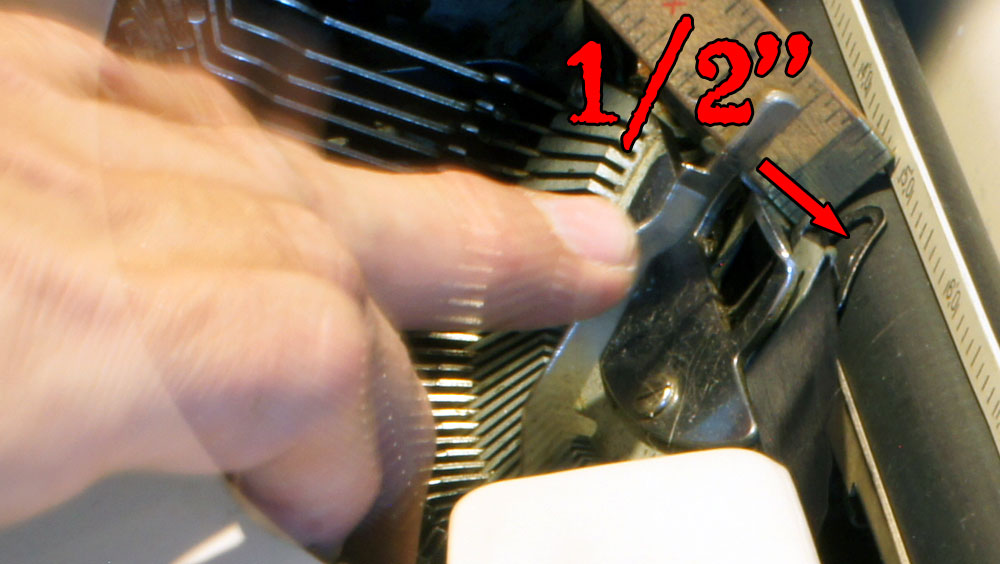
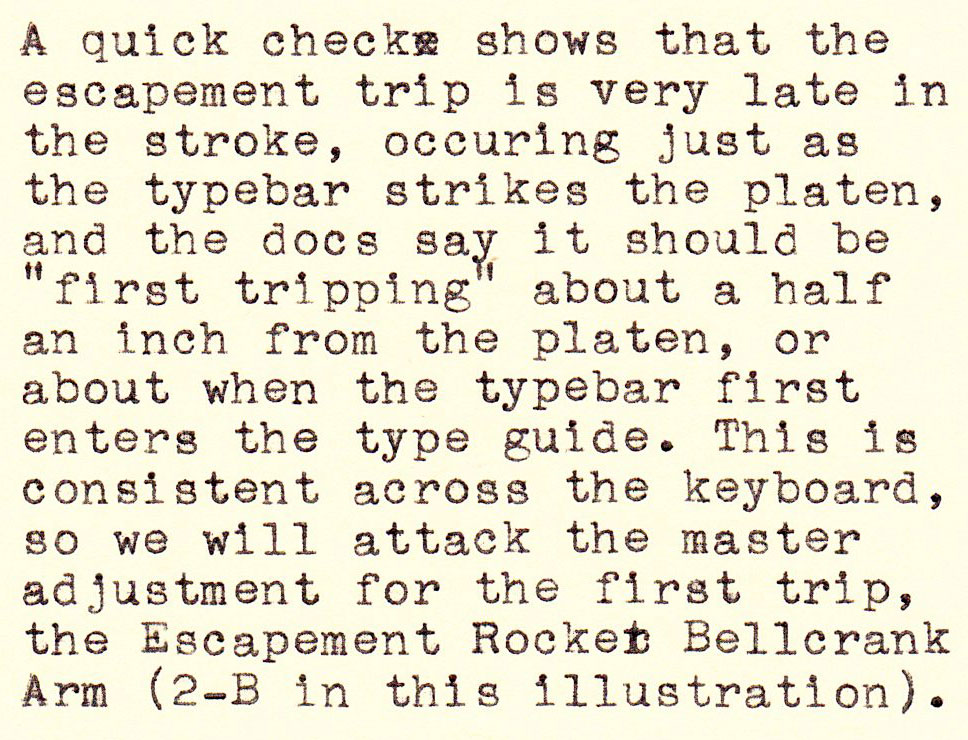
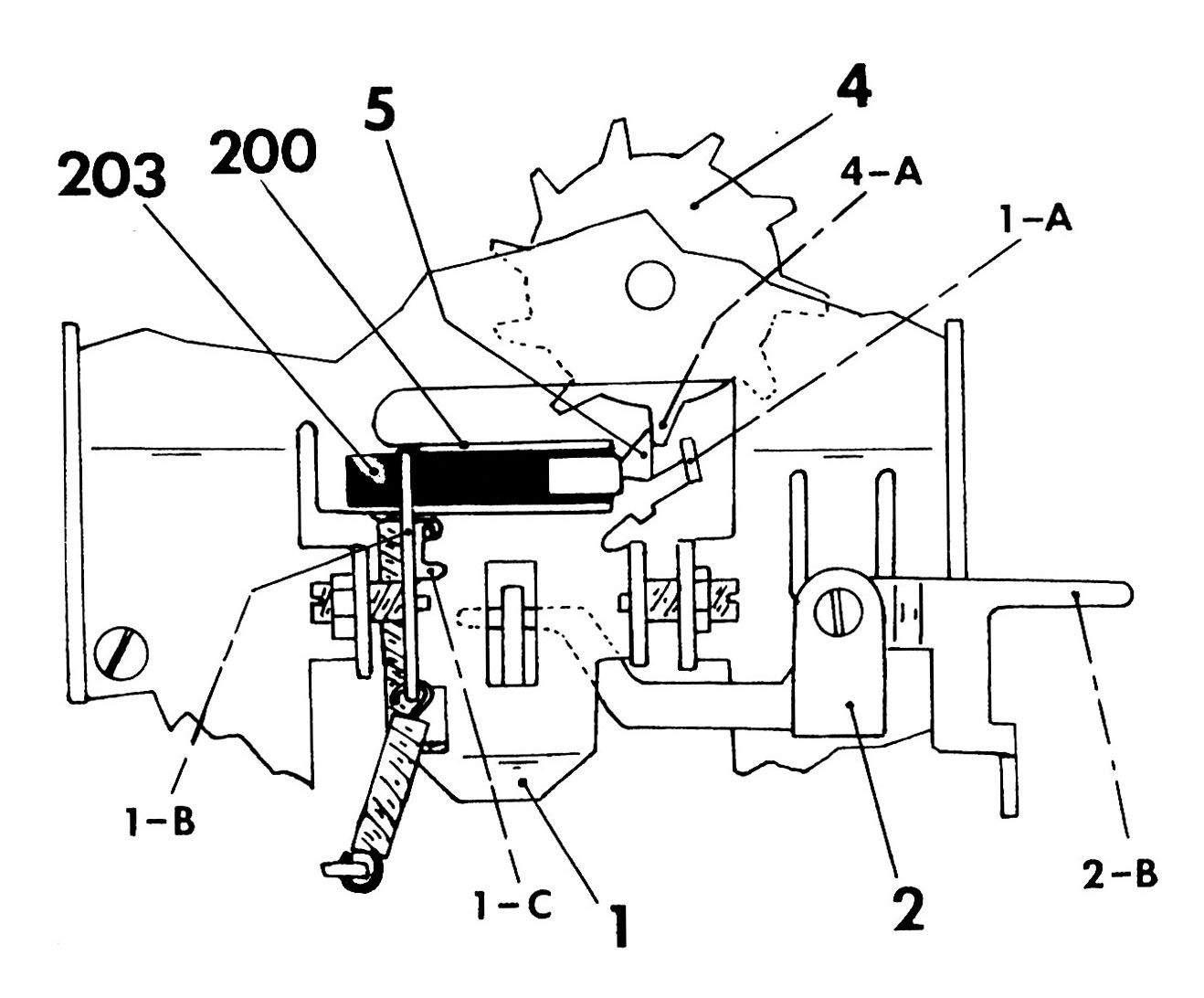

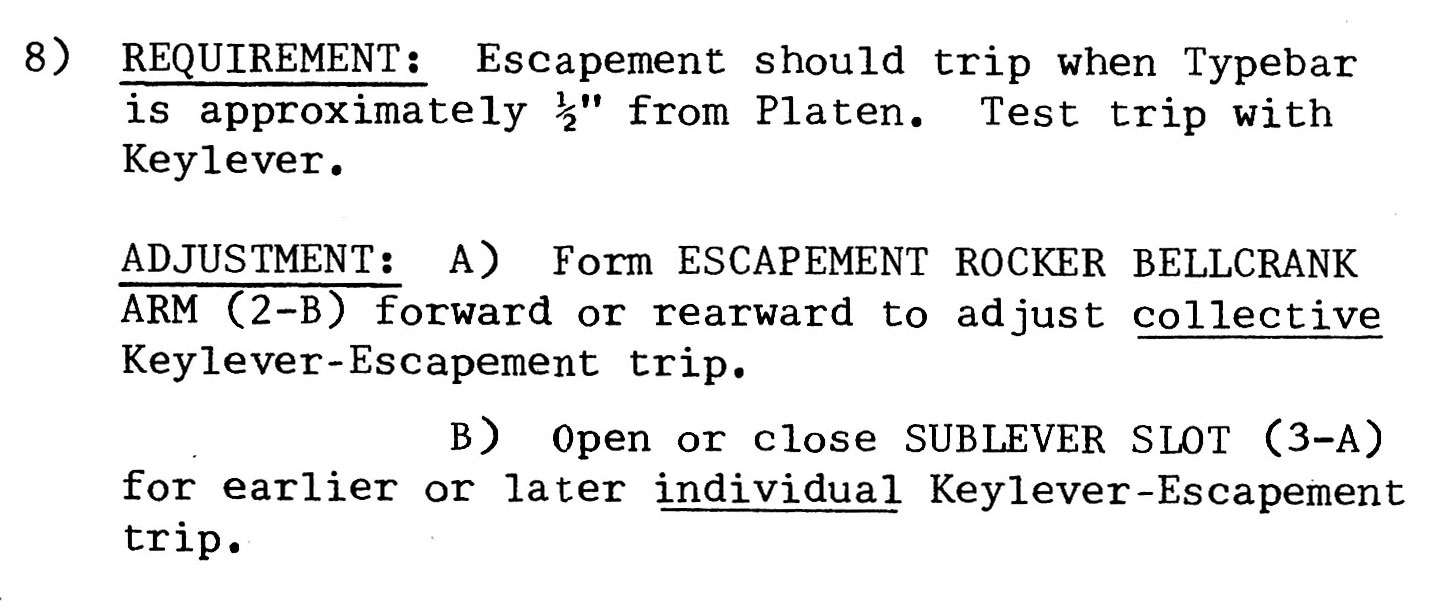
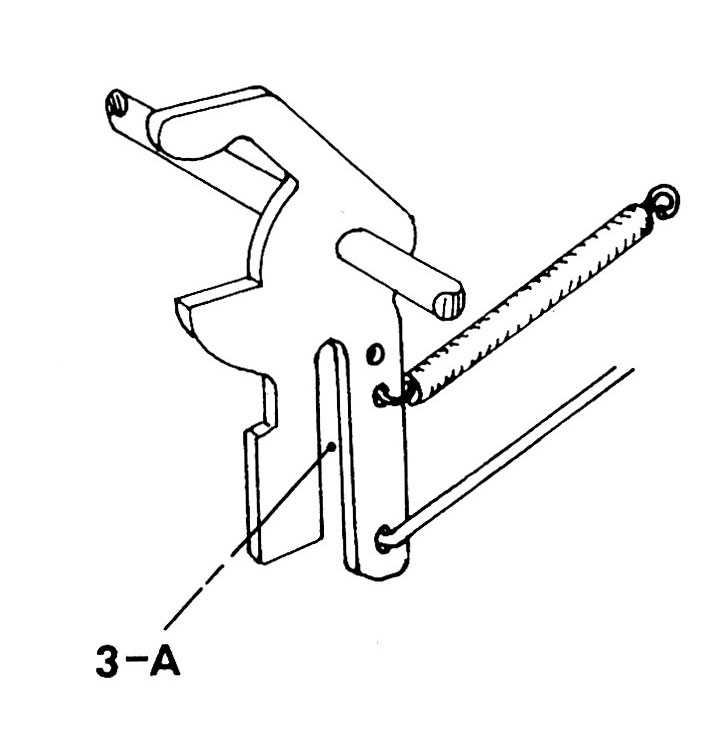
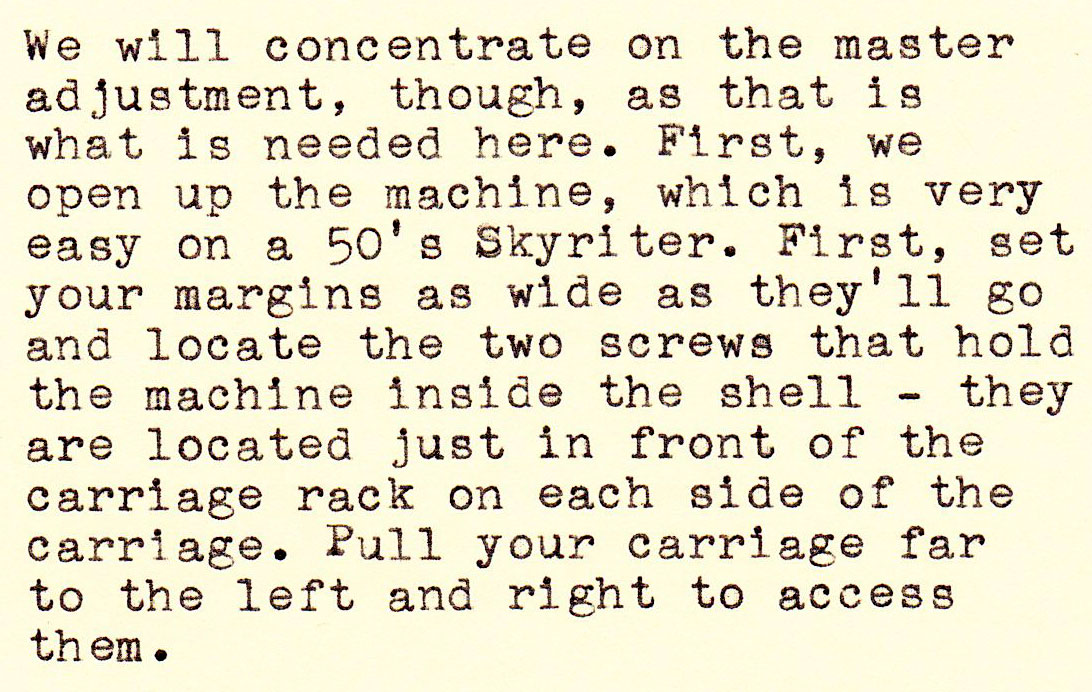
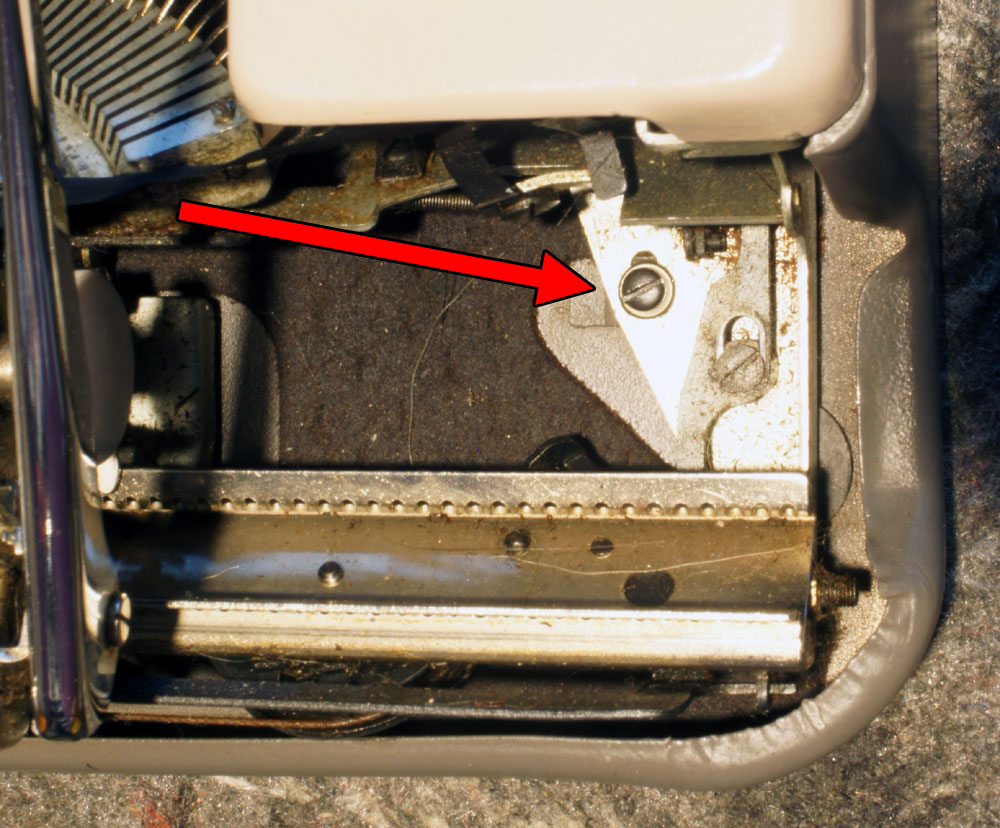
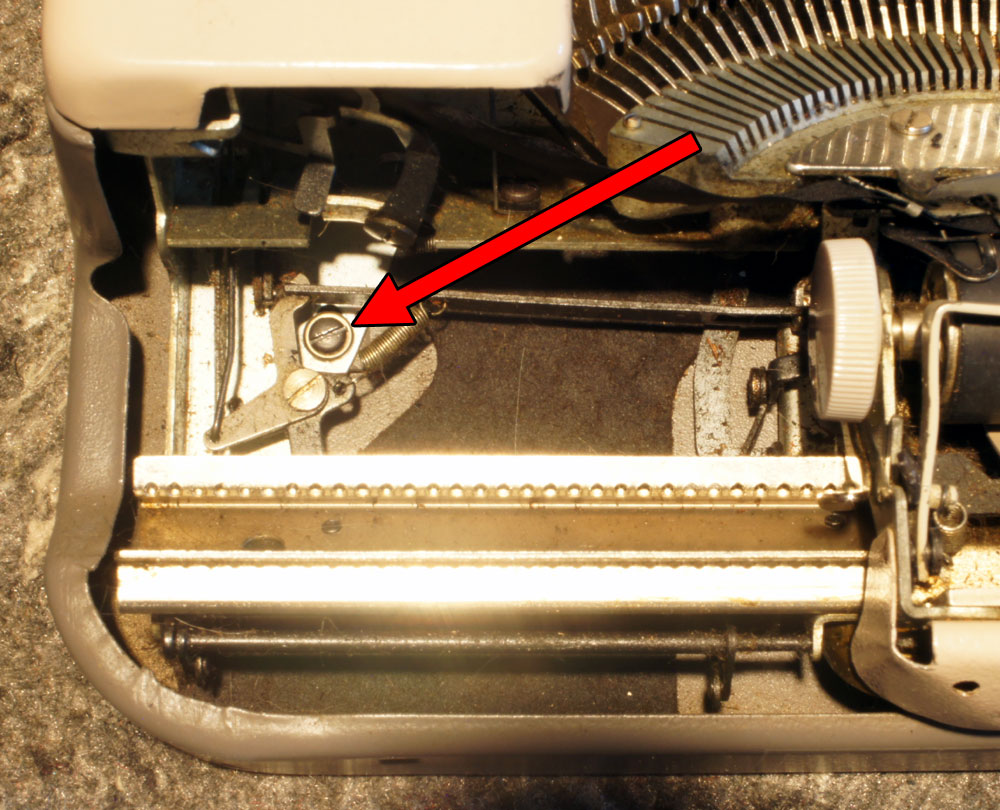

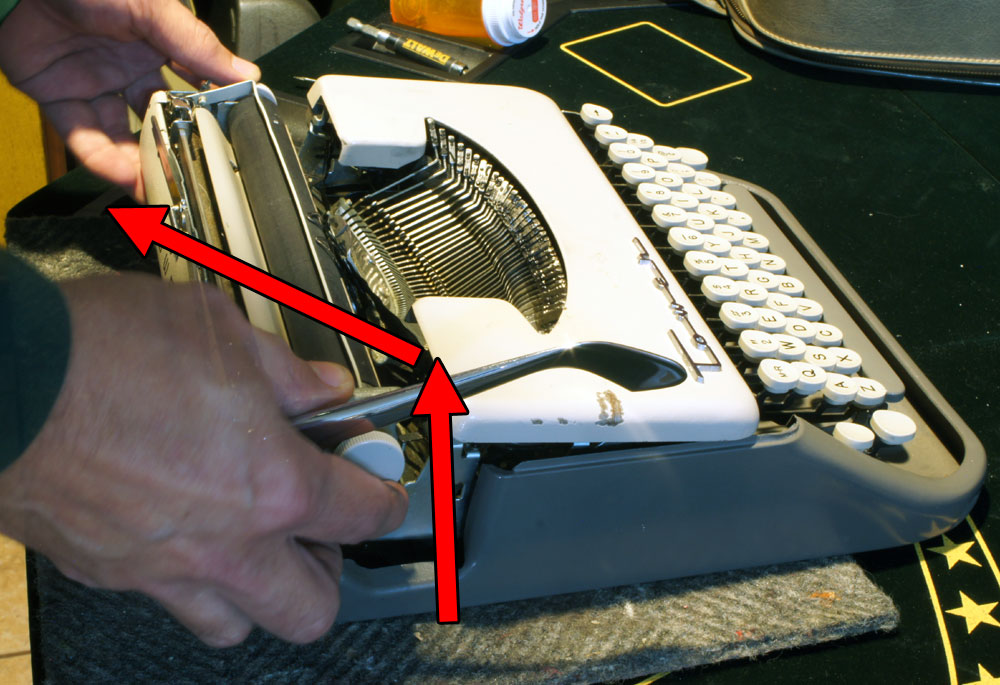
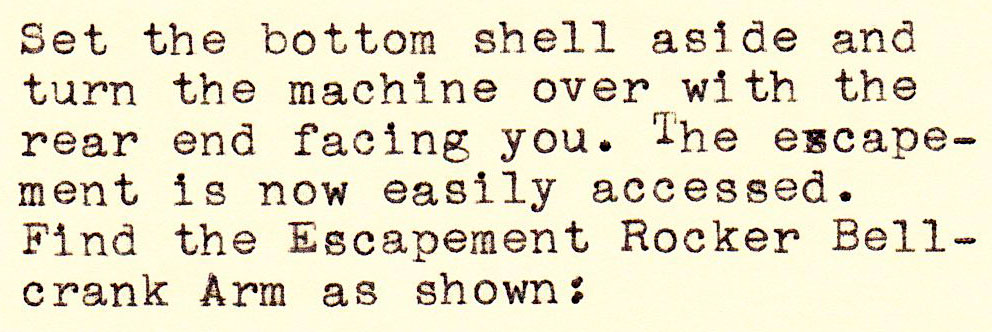
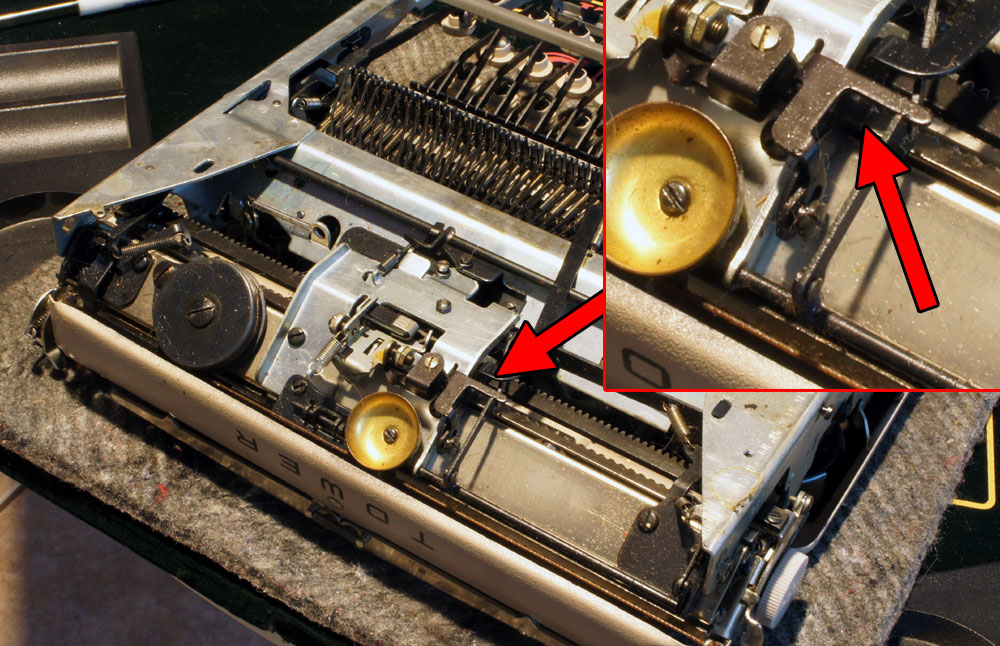

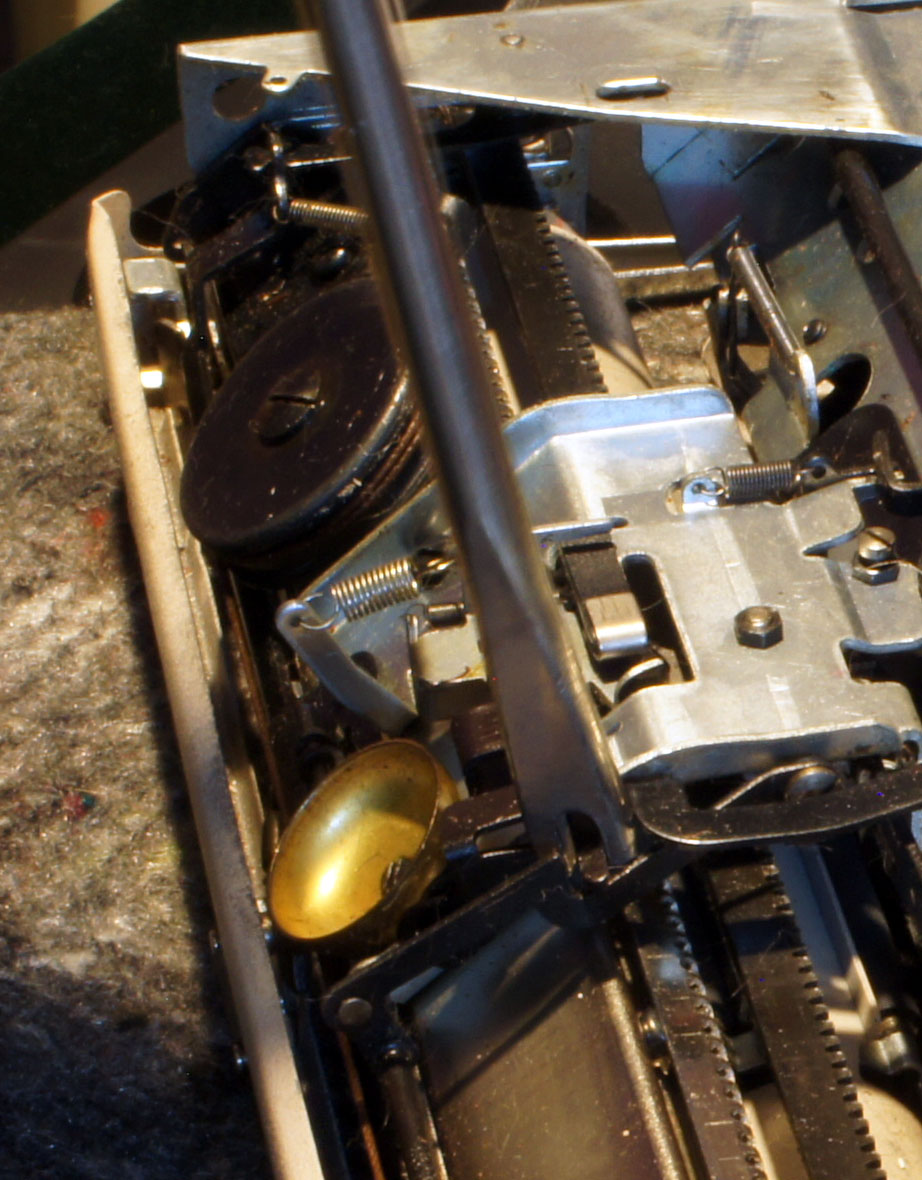
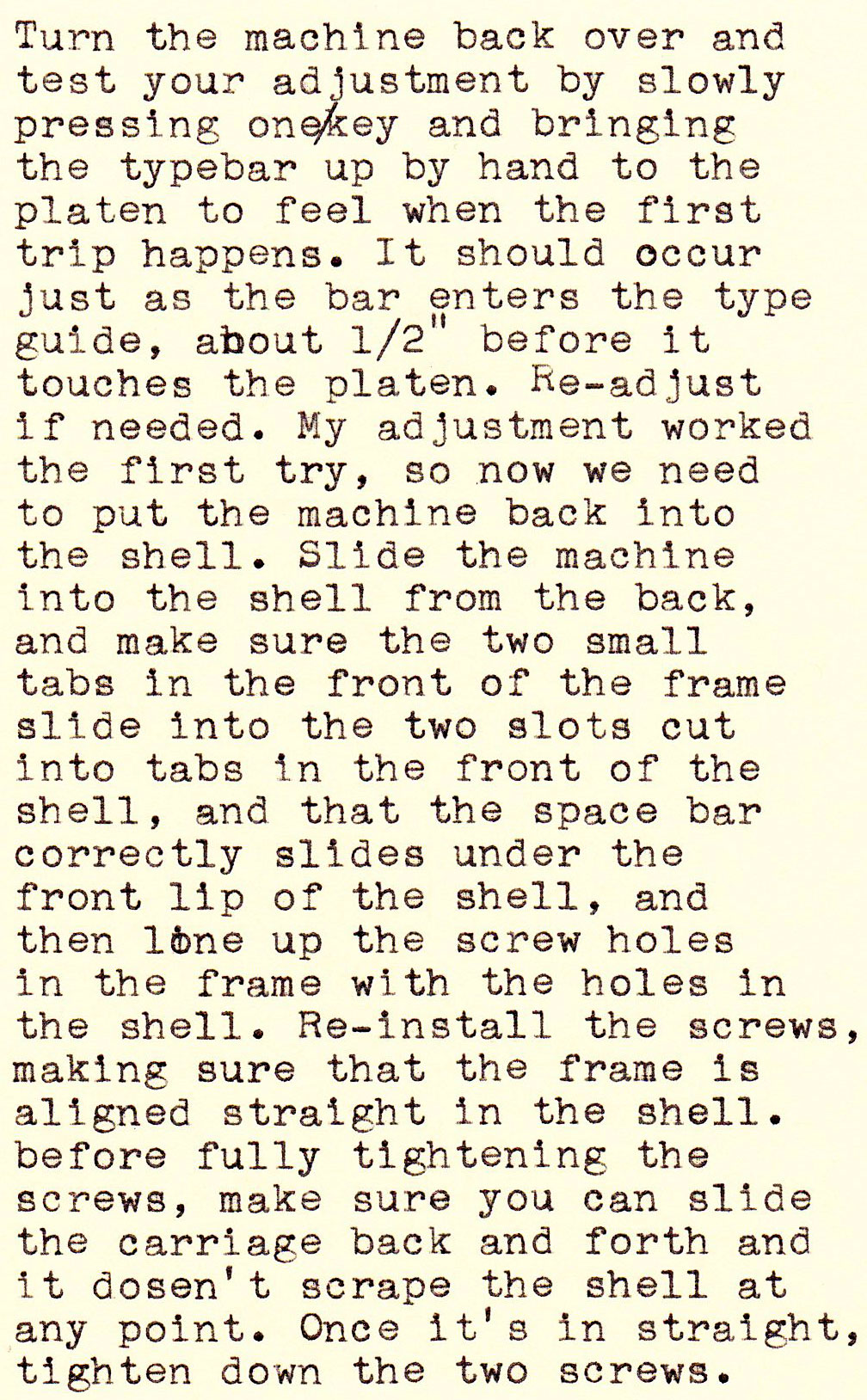
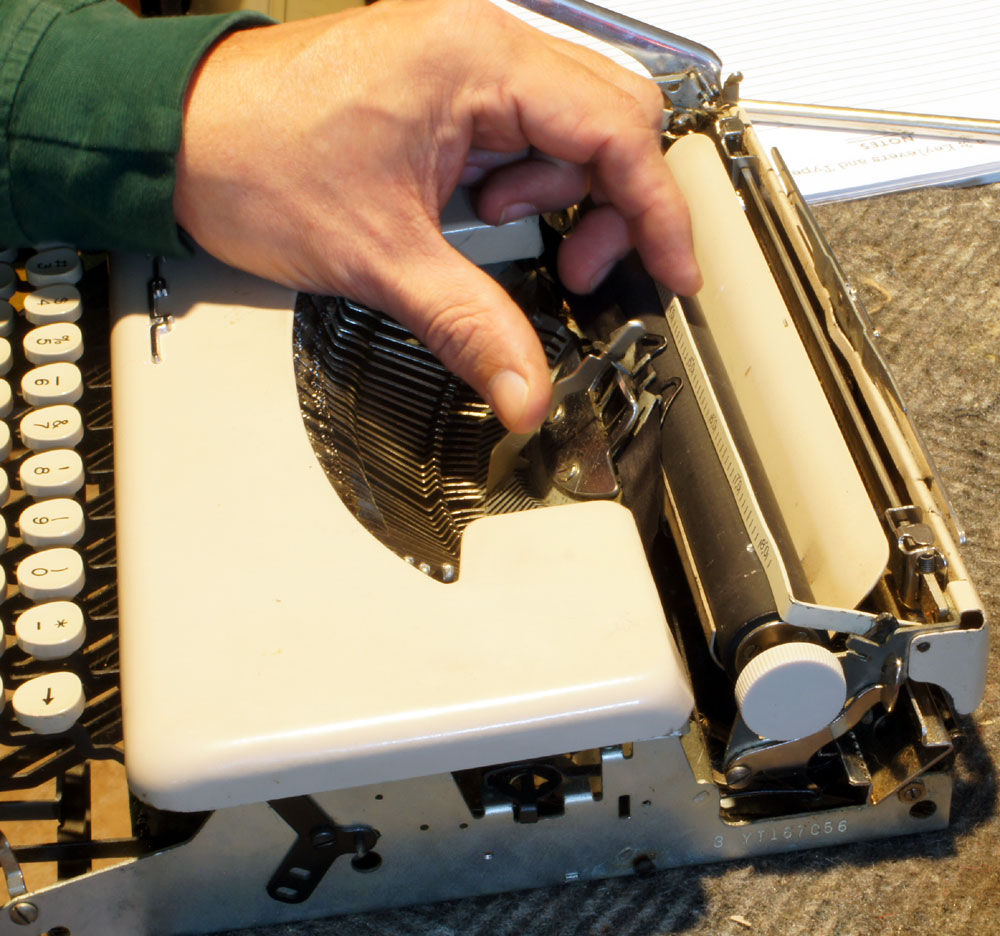
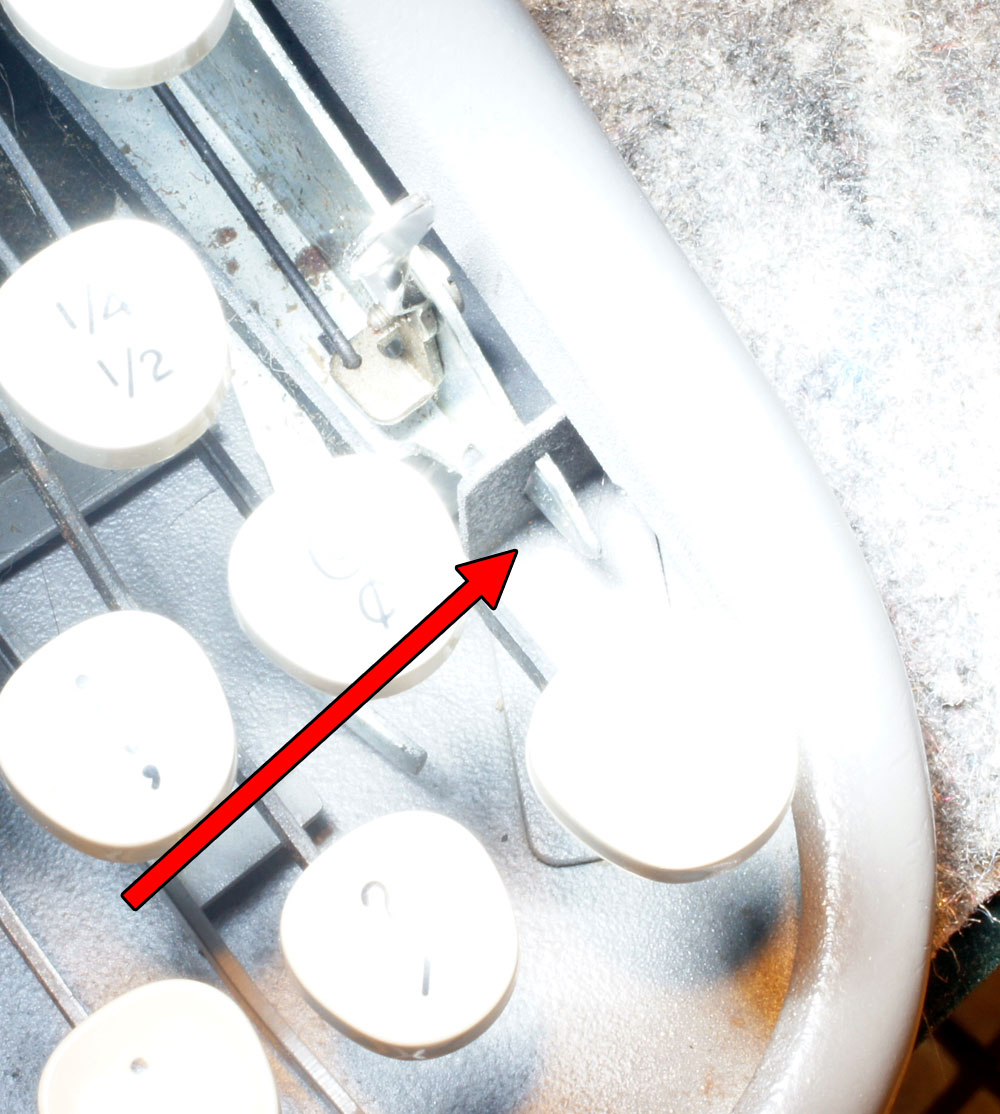
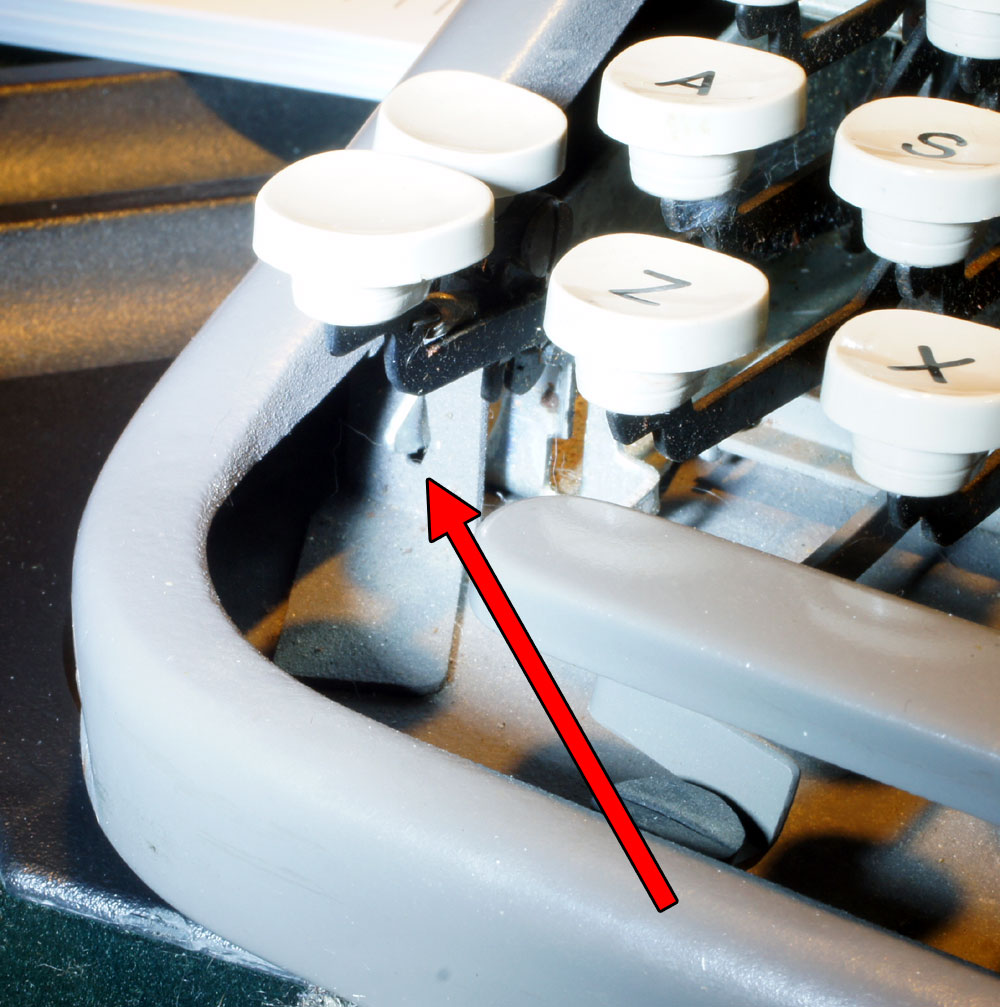

I should note here that correctly adjusting the trip point also does significantly “snappy up” the typing action. Having it too low results in a sort of mushy end of stroke. That’s all gone now. :D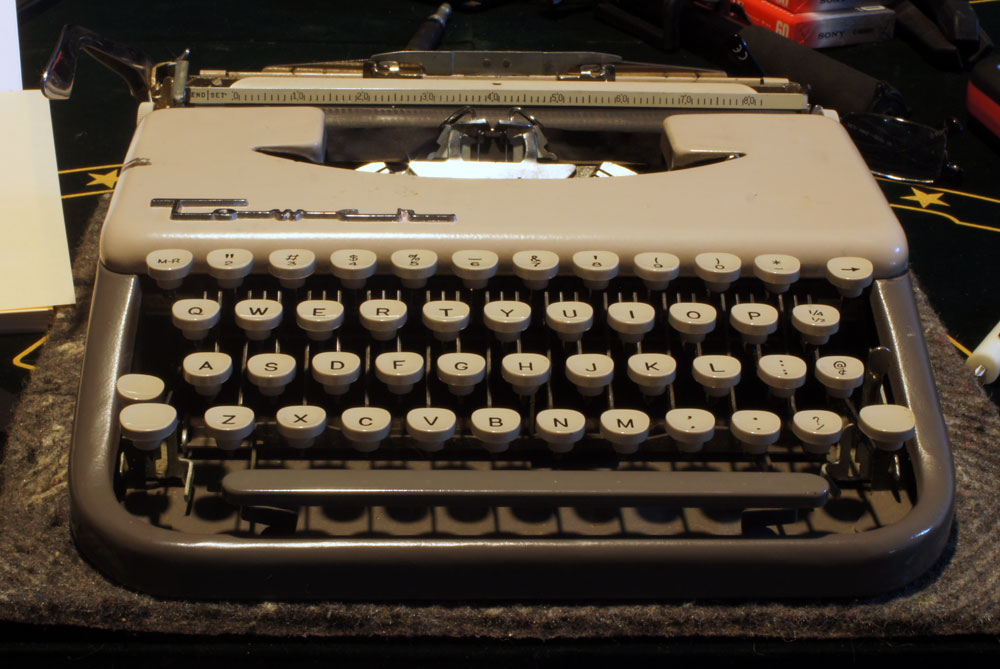
Note that I am using the The Smith-Corona 6YC Series Typewriter Repair Manual (Shop Manual) or (PDF Version) for these adjustments. This is because the basic “Skyriter” mechanics really didn’t change very much from the whole series from 1Y, 2Y, 3Y, 4Y and 6Y models other than the way the shell comes off (much more complex in the 6Y plastic-shelled series), so the 6YC manual pretty much tells you all you need to know about any Skyriter-pattern machine. Below is the full escapement adjustment section, in case you want to really dig in and fix things other than late trip/skipping issues (for Joe, who is looking to solve some Skyriter escapement issues himself):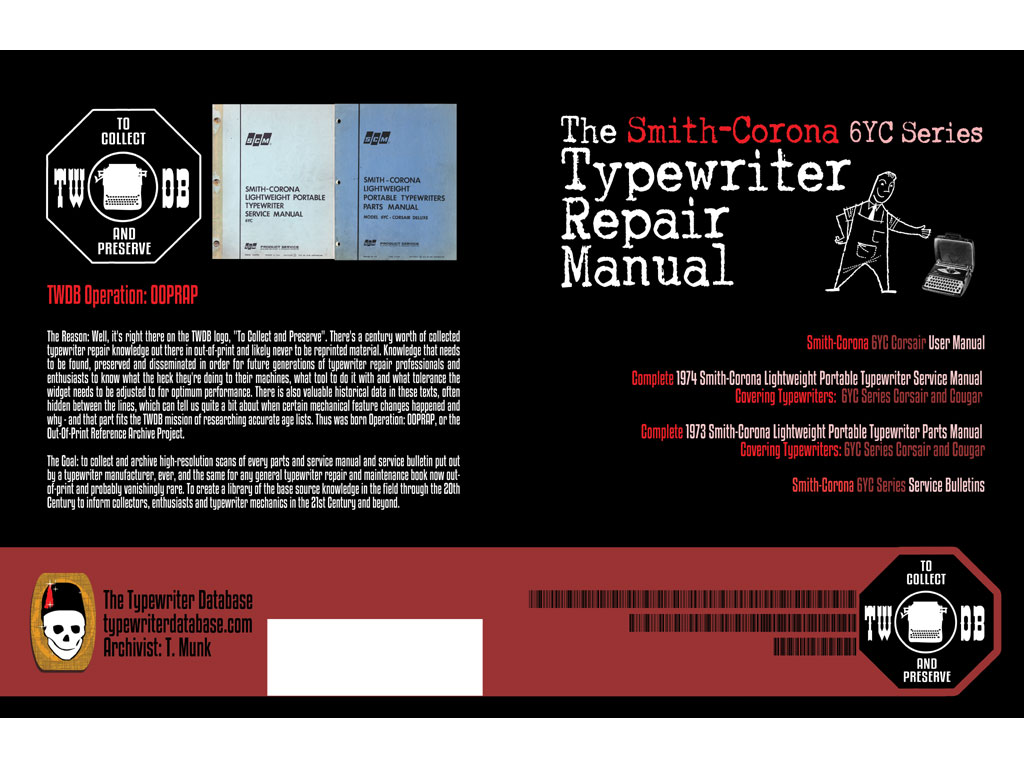
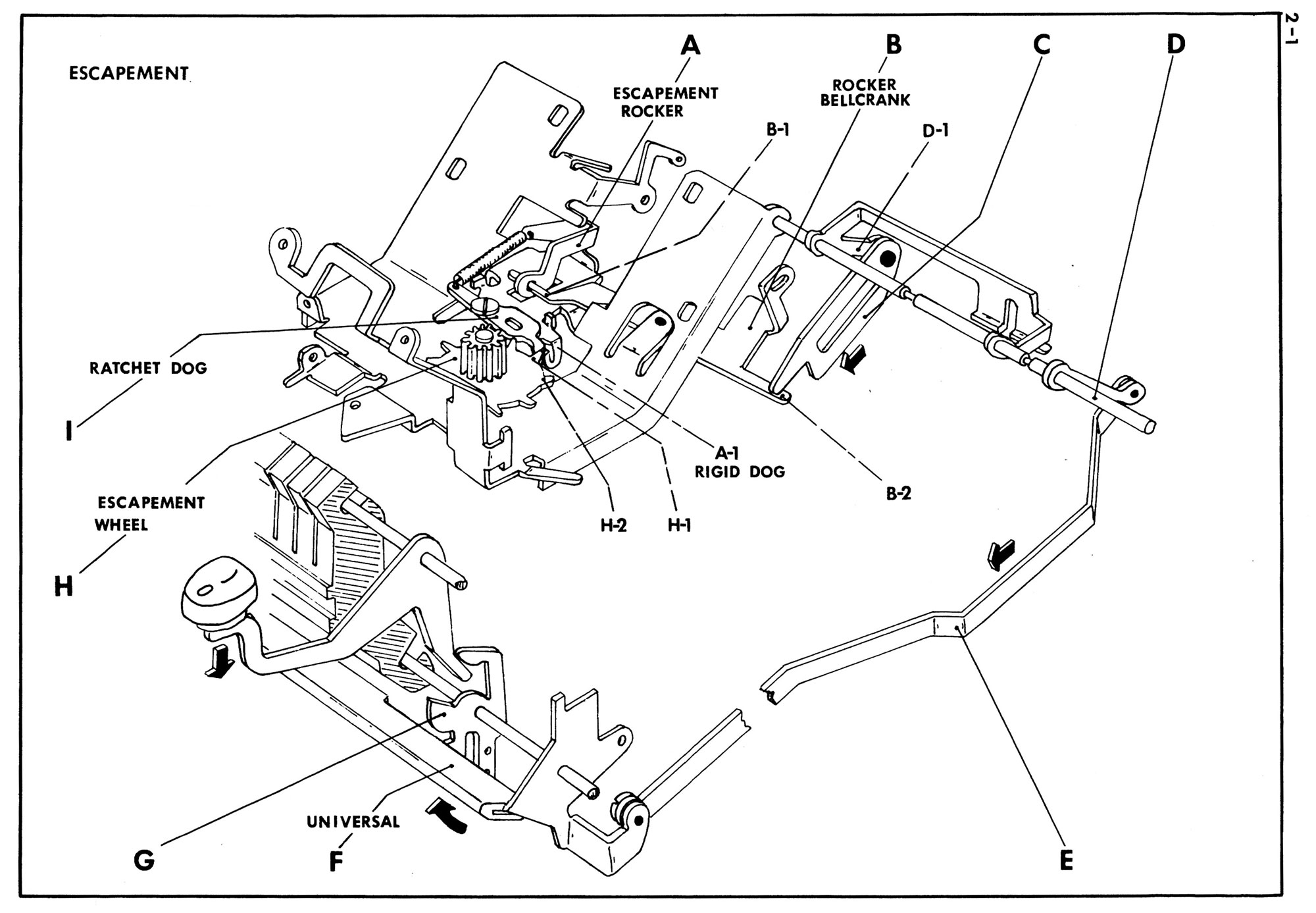
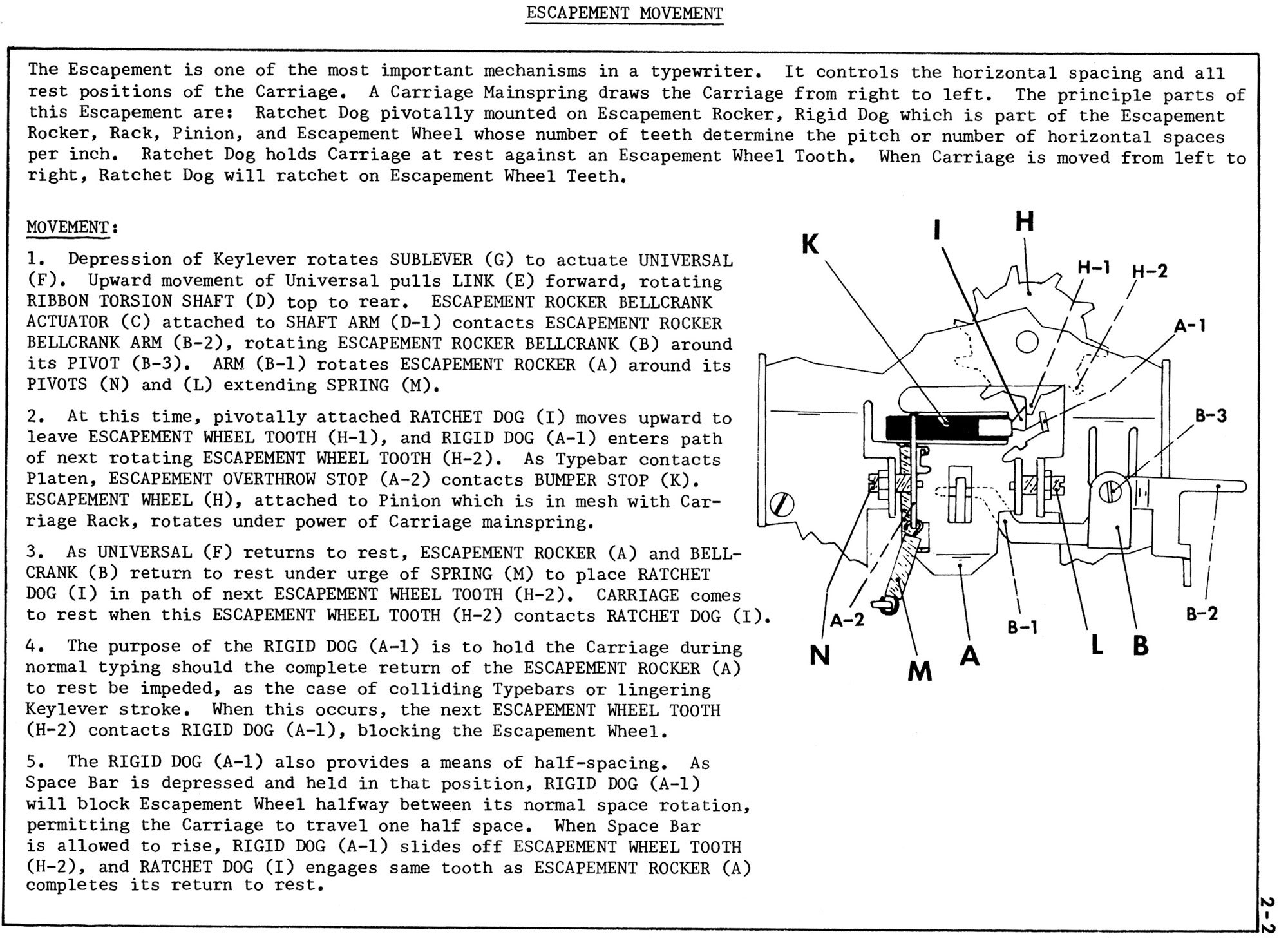
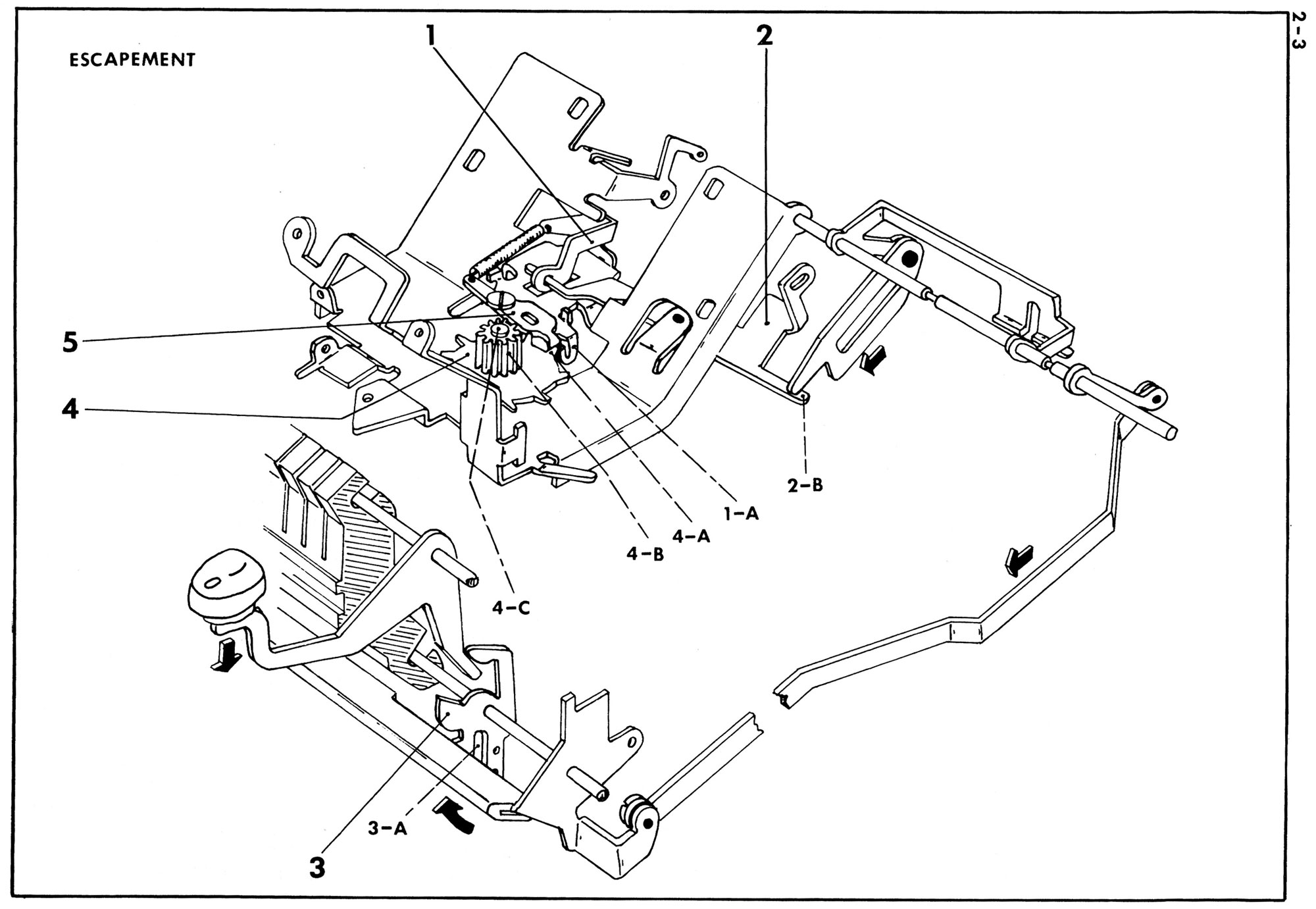
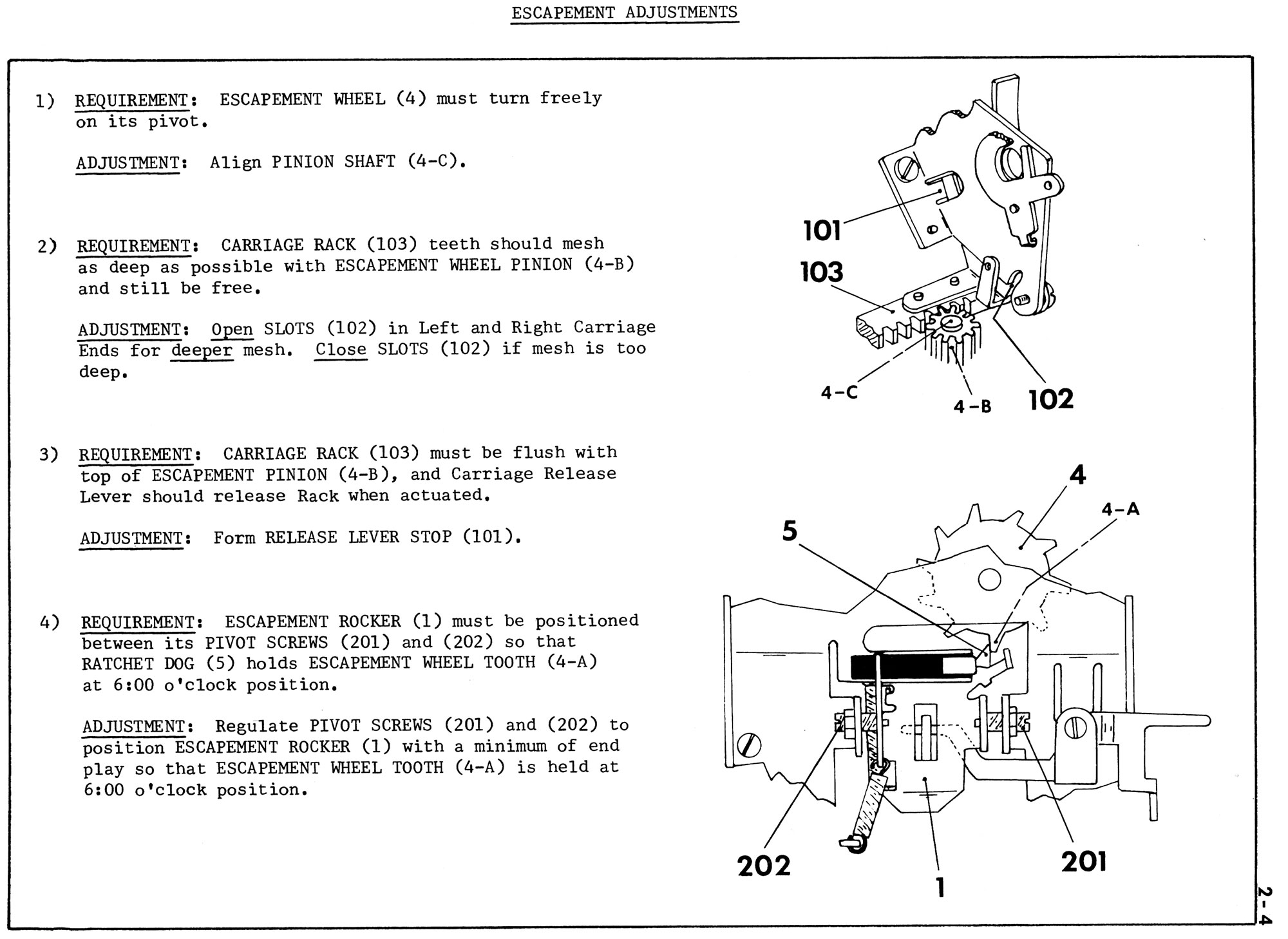

Looks like a satisfying repair.
I cleaned up a UK-made Corsair Deluxe the other day and was reminded of how much harder those machines are to take apart than Skyriters. The plastic housing snaps together at the front in a way that’s hard to undo without breaking it.
Yep, I submit that the plastic shell is only an improvement in that it protects the pop-up paper rest arms much better than the older design back carriage plate. Other than that, it’s needlessly fragile and difficult to open up.
All righty! Gonna try it soon, thank you Ted.
Ted, you must have read my mind or broken into my house because my Tower Chieftain III (which looks a lot like your machine. Hmmm…) was experiencing the same issue the last time I used it a few months ago.
Thanks for the tutorial. I’ll have to take a crack at my machine.
RUN! THE BLOGPOST IS COMING FROM INSIDE THE HOUSE!!! O:
Ha, ha! ( I never write “LOL”). You know, while you were here, the least you could have done is take one of my cats. Along with the typewriter. There’s been an uneasy truce between these two for a while now.
I’m going to have to try this fix on my Tower. And I’ll have to snap up a couple of these repair manuals some day soon.
still no getting along, eh? That’s an unfortunate dynamic in their relationship. I guess you wait to see which one dies first, eh? /:
Yeah, I think the older one is just too used to being alone. She’ll only take a swing at him if he gets too close to her. Other times, they’ll sniff each other’s noses. Go figure.
Nice work on the tutorial.
I discovered that adjustment while working on a skippy Skyriter way back when I was still in Florida.
Recently finished adjusting a Skyriter for someone last week. I love working on these, they are simple and very well made. Many other small portables as well as portables are over complicated.
does anyone know the name of the artists for these manuals
Oooh! This gives me some ideas for troubleshooting some minor issues on my Chieftain II. Good work on the tutorial and repair!
This is a wonderful tutorial, and though I don’t have that specific problem with my Skyriter, your details have enlightened me about some of the other mechanics of the machine that will certainly help me!
Also, I am going to get the 6Y manual now – knowing that it is still very applicable to my much older Skyriter is valuable, so thanks! I just got the big Manual Repair Bible, and am thrilled with it. One of the best resources I have ever come across. Thank you so much!
So very timely! I’m putting the finishing touches on a Skyriter that the previous owner had dropped, partially disassembled, and then sorta reassembled and these were the very last steps I needed. Much thanks. And now I know that the 6Y manual is what’s needed if I have future troubles.
Ted, you son of a gun, I just tried this repair yesterday afternoon and got a stellar result! I haven’t put the typewriter through it’s paces yet, but a couple of quick sentences looked promising AND the keys had a slightly snappier feel, as you say.
While I’m here, a very Merry Christmas to you both and a safe and Happy New Year!
I’m always happy about happy results! Merry Christmas to you too! (:
I’m considering buying your Typewriter Repair Bible, but wanted to know, which of your guides would I purchase for a 1977 Smith-Corona Galaxie XII and a 1955 Smith-Corona Skyriter? Would I only need the 6YC Series Bible? Or would I need to purchase the Floating Shift Bible in addition to the 6YC Series Bible?
Kind regards and happy holidays,
Brent
Hmmn, I would suggest the 6YC book for the Skyriter. As mentioned, generally speaking within a particular series, there is very little mechanical differences between a machine of a particular pattern made 20 years apart, so the 6Y book works for a 3Y or 4Y as well.
However, a Galaxie is a very different machine than a Skyriter (as you may surmise just from looking at the size difference). It is in fact part of the Smith-Corona “Floating Shift” series that goes all the way from the 1 Series “Standard” of the 30’s to the 6 series Galaxie of the 70’s. These are all very similar, but there are some differences due to improvements and new features (like repeating spacer and keyset tabulator). The Smith-Corona mechanic was expected to have the training and documentation for the whole series, so much of the basic explanations of certain features that are covered in earlier manuals are skipped in later ones – thus if you want a really complete understanding of the late 60’s to early 80’s Galaxie XII, you might consider getting the “Floating Shift” bible (which covers the 1 through 5 Series) and also the “5, 5TE and 6 Series” manual, which covers the Galaxie and “new 5 series” specifically. You’ll find that the earlier volumes go into much greater detail than the later one, which is specific to the newer version of the design. If you don’t care to go into a deep dive, though, the later 6 Series manual will still tell you how to adjust things on a Galaxie: https://sellfy.com/p/7Kkk/
I recently acquired a Skywriter and will echo what others have said: It’s a snappy, solid-feeling machine despite its diminutive size. Thanks to the database, I suspect it’s a 1954-5.
I have a question about the typeface alignment. There is no vertical spacing issue with the upper and lower case characters, but a few letters seem out of whack compared to the rest.
Does your repair manual go into vertical alignment? Is it a matter of forming the individual type bars?
Yeah, that’s usually a matter of forming or mauling individual typebars or slugs. It’s covered in the manuals but I also made an update that mainly covers type alignment specifically, which you can find here:
https://drive.google.com/open?id=0B9DocmExIHgXaGNreHpqSnpTSUU
There are some pretty specific tools you need. Skyriters are pretty alignment-janky anyway – you might decide it’s not worth doing, or at least something you should try on a parts machine first. :D
Thanks! You summed up my thoughts exactly — I’m not keen to try forming typebars for the first time on a machine that works well, all things considered.
Just bought a Skyriter with this exact problem and now the problem is solved.
Thanks, Monk!
-Wm
Just fixed a skippy Skyriter that I had serviced in NYC. They told me I would have to adjust my typing style to keep it from skipping, and low and behold….one quick adjustment suggested here practically eradicated all skipping. I just typed an entire sheet of paper and it only skipped twice as opposed to twice every line before the adjustment. Thank you!
I had the same issue on a Skyriter I bought at an antique shop. Wasn’t sure I had managed to pull the arm properly, but it was easy and the typewriter works perfect now! So thrilled to be able to write easily without my stupid computer.
My’61 Skyriter has both issues. The typewriter occasionally skips a space, and individual keys trip the escapement early, late, and 1/2″ from the platten. There does not appear to be a correlation between the space skip and the keys that trip the escapement early or late.
Should I adjust the individual keys first, or the master adjustment? The keystrokes overall are mushy toward the end of the stroke and lack the “snappy” feel when propertly adjusted.
Yeah, if the trip isn’t consistent across the keyboard, then you’ll need to address the individual key trip and ensure they are consistent first, then adjust the master trip. Good luck! (:
Thank you.
I’m looking for a service manual to work on my Smith-Corona Skywriter 2Y. Which manual would you recommend? Currently I have some typing alignment issues and the K and H key are not printing properly. They don’t seem to be hitting the platen at the right angle. Thanks
That is common on Skyriters – you’ll have to work on forming the typebars/slugs to the right alignment. Here’s some basics:
https://typewriterdatabase.com/1945-AMES-OAMI-MechanicalTrainingMan.v1-alignment.manual
Thanks, Ted!
Almost eager to try this. Great tutortorial.
Does the Typosphere have a panoply of saints? You are certainly listed among them it not the chief Archangel.
Aye,
Chris
Thank you for this post! I was having a problem with my Corsair randomly not advancing, and just minorly adjusting this bit made it work like a charm!
Just wanted to drop a note real quick thanking Rev. Munk for this blog post. I’ve referred to it probably half a dozen times on 2 different Skyriters now, and setting the escapement trip properly always makes them run that much nicer. -Mitchell